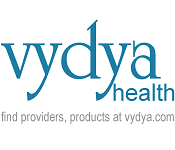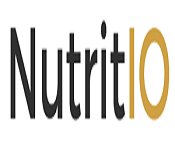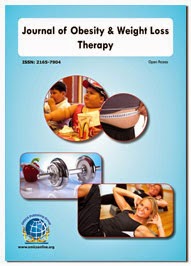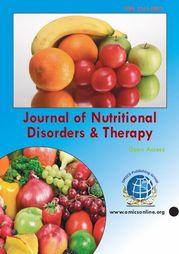Theme: Revolutionary Strategies for future excellence towards right nutrition and obesity prevention
Nutrition Meet 2019
ME Conferences invites all members and supporters from worldwide to attend “2nd World Congress on Nutrition and Obesity Prevention” during 21-22 March 2019 in Dubai, UAE. The conference highlights the theme “Revolutionary Strategies for future excellence towards right nutrition and obesity prevention ” welcomes the leading academic Scientists, Researchers, professors, Business delegates, talented student communities and research scholars to Dubai, a global city which has become iconic for its skyscrapers for sharing their experiences and research conclusion about all aspects of Nutrition and Obesity Prevention.
ME Conferences organizes 1000+ Global Events inclusive of 300+ Conferences, 500+ Workshops and 200+ symposiums on various topics of Science and Technology across the globe with support from 1000 more scientific societies and Publishes 500+ Open access journals which contain over 50000 eminent personalities, reputed Scientists as editorial board members. It is one of the most Prestigious and Professional cutting-edge international conferences in Nutrition and Obesity Prevention. The Conference includes prompt keynote presentations, Oral talks, Poster presentations and Exhibitions.
Why to attend?
With members from around the World focused on learning about Nutrition and Obesity Prevention, this is your best opportunity to reach the largest assemblage of participants from the Nutrition and Obesity community. Conduct Presentations, Distribute information, meet with current and Potential Scientists, make a splash with new advancements, and receive name recognition at this International Conference. World-renowned speakers and Newest Innovations in Nutrition and Obesity are hallmarks of this conference. We look forward to meet you at one of our ME Conferences, “2nd World Congress on Nutrition and Obesity Prevention” during March 21-22, 2019 Dubai, UAE.
The World Congress on Nutrition and Obesity Prevention highlights the evolving strategies for Obesity, Weight loss-management, Obesity Medicines, childhood obesity, physical therapy, exercise and upcoming challenges in the field of Medicine & Healthcare.
Target Audience:
· Obesity specialists
· Nutritionists
· Physicians
· Endocrinologists
· Metabolic and Bariatric Surgeons
· Basic and Clinical Research Scientists
· Dieticians
· Diabetes Educators
· Integrated Health Professionals
· Physical Therapists
· Students
· Industry Professionals
· Fitness Professionals
· Health Promoters
Track 1: Clinical Nutrition
Clinical nutrition is the nourishment of patients in human services. Clinical alludes to the administration of patients which incorporates outpatients at clinics and furthermore inpatients in healing clinics. It joins the logical fields of nourishment and dietetics. It intends to keep a solid vitality adjust in patients, and in giving adequate measures of different supplements, for example, protein, vitamins and minerals.
· Dietetics
· Vitality Balance
· Oral organization
· Enteral organization
· Intravenous
· Immuno nourishment
Track 2: Nutrition and Metabolism
Metabolism is the arrangement of life-maintaining compound changes inside the cells of life forms. The three principle reasons for metabolism are the change of nourishment/fuel to vitality to run cell forms, the transformation of nutrition/fuel to building blocks for proteins, lipids, nucleic acids, and a few starches, and the end of nitrogenous wastes. These enzyme catalyzed responses enable life forms to develop and duplicate, keep up their structures, and react to their surroundings. The word metabolism can likewise allude to the entirety of every single synthetic response that happens in living life forms, including assimilation and the transport of substances into and between various cells, in which case the arrangement of responses inside the cells is called intermediary metabolism.
· Human wellbeing
· Physical action
· Fitness
· Protein metabolism
· Catalyst
· Assimilation
· Starch metabolism
· Fat metabolism
· Amino acid metabolism
Track 3: Paediatric and Adult Nutrition
Babies should be exclusively breastfed for the initial a half year of life to accomplish ideal development and improvement. After six months, adequate and complementary foods should be introduced while continuing breastfeeding. Complementary food should be rich in supplements. Babies ought to get an assortment of sustenance including delicately cooked nourishment like potatoes, grains, meat, poultry, fish or eggs and so on. The consistency of the nourishment ought to be to such an extent that it remains on the spoon.
Nutritious necessities don't change incredibly between the ages of 19 and 50 years, aside from amid pregnancy or lactation or if a person's physical activity levels suddenly change. Vitality necessities fall when development stops, as a rule after the adolescent years, yet prerequisites keep on varying relying upon the age, sexual orientation and activity level of the person.
· Low Birth Weight Prevention, Control and Treatment
· Child Obesity and Risk Factors
· Nutritious Requirements in Infants and Children
· Impacts of Malnutrition in Children Treatment Strategies
· Child Nutrition
· Paediatric Nutrition
· Prenatal Nutrition
Track 4: Nutrition and Health
A healthy diet ensures against lack of healthy sustenance in every one of its forms, and in addition non-transmittable infections in future. Vitality admission should adjust vitality use. Add up to fat ought not to surpass 30% of aggregate vitality admission to avoid unhealthy weight gain. Unsaturated fats are desirable over saturated fats. Restricting admission of free sugars to below 10% of aggregate vitality. Keeping salt admission to below 5 gram for each day avoids hypertension, diminishes the danger of coronary illness, stroke and iodine insufficiency in the population. Fruits, vegetables, nuts and whole grain and so forth, give vitamins and minerals. No less than 400 gm of foods grown from the ground must be included each day in the diet.
· Nutrition for Healthy Aging
· Geriatric Nutrition
· Human Nutrition and Dietetics
· Nutraceuticals and Medicinal Foods
· Nutrition and Cardiovascular Health
· Role of Nutrition in Human Life Cycle
Track 5: Food and Nutrition
The food is composed of small units that provide nourishment to the body. These are required in fluctuating sums in various parts of the body for performing specific functions. This implies great nourishment is basic for good wellbeing. In any case, if diet gives incorrect amounts, either less or an abundance of what is required, it brings imbalance of nutrients in the body. The condition is in charge of different inadequacy ailments and moderate or no development of the body. Great nourishment can help prevent disease and promote well-being. There are six classifications of supplements that the body needs to acquire from food: protein, starches, fat, strands, vitamins and minerals, and water.
· Nutrition and Food Safety
· Functional nourishments and Bioactive compounds
· Nutrition through Life course
· Food Insecurity And Health Outcomes
· Fast Food Marketing
Track 6: Parental and Maternal Nutrition
Parenteral nutrition, or intravenous feeding, is a strategy for getting nourishment into the body through veins. Depending on which vein is utilized, this system is regularly alluded to as either total parenteral nutrition (TPN) or peripheral parenteral nutrition (PPN). This type of nutrition is utilized to help individuals who can't get their core nutrients from food. Parenteral nutrition conveys supplements, for example, sugar, starches, proteins, lipids, electrolytes, and trace elements to the body. These supplements are crucial in keeping up high vitality, hydration, and quality levels.
During pregnancy, all women require more food, a differed eating regimen, and micronutrient supplements. Whenever vitality and other supplement admission does not build, the body's own particular stores are utilized, leaving a pregnant lady weakened. Vitality needs increment in the second and especially the third trimester of pregnancy. Inadequate weight gain during pregnancy regularly brings about low birth weight, which builds a baby's danger of passing on. Pregnant women in like manner require more protein diet, iodine, vitamin A, folate, and distinctive supplements. Women who do not get enough energy and nutrients in their diets risk maternal depletion. To keep this, additional nourishment must be made accessible to the mother.
· Total parenteral nourishment (TPN) is given when the gastrointestinal tract is non-functional
· TPN is utilized for comatose patients
· Energy and supplement insufficiency in women
· Nutrient basics during the conceptional period
· Nutrition and the menstrual cycle
Track 7: Probiotics
Probiotics are bacteria that assist in keeping the characteristic balance of life forms in the digestive system. The typical human stomach related tract contains around 400 sorts of probiotic microorganisms that decrease the development of destructive microbes and promote a healthy digestive system. The biggest gathering of probiotic microorganisms in the stomach is lactic acid bacteria. Yeast is additionally a probiotic substance. Probiotics are likewise accessible as dietary supplements. It has been recommended that probiotics be utilized to treat problems in the stomach and digestive organs. Regardless it should be demonstrated which probiotics work to treat maladies. Now, even the strains of probiotics that have been demonstrated to work for a particular ailment are not broadly accessible.
· Probiotic Microorganisms
· Selection and Maintenance of Probiotic Microorganisms
· Functional impacts of probiotics
· Analysis of Probiotics and Prebiotics
· Safety Assessment of Probiotics
Track 8: Nutritional Disorders
The nutritional disorder is a major challenge for healthcare providers in many nations. The traditional approach orders this under malabsorption and resorts to supplementation treatment. All the more essentially, it is seen that in the event of supplementary treatment, when it is ceased, the disorder reappear gradually. The absence of fundamental supplements in the body prompt infections. The majority of supplements are promptly accessible in the nourishment. During specific periods of life like pregnancy, after significant sicknesses, the prerequisite of the supplements will be extraordinary. In the event that there is deficient supply, it might prompt disorders, for example, babies with low birth weight, osteoporosis. There are additional conditions wherein the retention of these supplements gets hampered prompting lacks.
· Iodine Deficiency Disorders
· Eating Disorders
· Vitamin B12 Deficiency
· Mineral Deficiency Disorders
· Other Inflammatory and Autoimmune Diseases
Track 9: Therapies for Nutrition
Nutritional therapy is a restorative way to deal with treating medicinal conditions and their related side effects by means of the utilization of a particularly custom-made diet routine formulated and checked by a therapeutic specialist doctor, enlisted dietitian, or expert nutritionist. Dietary Therapists use a broad assortment of tools to review and recognize potential nutritious irregular characteristics and perceive how these may add to a man's manifestations and prosperity concerns. This approach enables them to work with people to address nourishing balance and help bolster the body towards looking after wellbeing. Dietary Therapy is perceived as a complementary medicine and is applicable for people with chronic conditions, and also those searching for help to upgrade their wellbeing and prosperity.
· Medical Nutrition Therapy
· Cognitive Nutrition Therapy
· Amino Acid Nutrition Therapy
· Nutritional treatment
· Intra dialytic parenteral nourishment
Track 10: Nutritional Management
Nutritional management, otherwise called "food service management", is the act of giving nutritious alternatives to people and gatherings with abstaining from food worries through supervision of food services. Professionals in nutritional management, known as dietary supervisors, work in healing facilities, long-term care facilities, school and college cafeterias, restorative offices, and other foodservice settings, for the most part actualizing dinner designs built up by a dietitian or nutritionist. They are in charge of overseeing crafted by other nutrition personnel, for example, cooks and dietary assistants.
· Reduced admission of saturated fat, trans fat, sugar and sodium
· Achieving healthy body weight
· Increased admission of foods grown from the ground, entire grains, fish and dairy items.
Track 11: Role of Nutrition in Disease Prevention
Health is much more than the absence of sickness. It is a positive quality, accentuating physical, social, intellectual, emotional, and spiritual wellbeing. Ideal nourishment, giving all supplements in both kind and sum, is the foundation of good wellbeing and the forefront of the counteractive action. The sustenance that is eaten, and the supplements they give, is the essential proceeding with natural components affecting the development, improvement, practical capacities, and wellbeing. Nutritional information, with the training of both the overall population, and particularly health professionals is critical if it were to succeed in significantly reducing the excessive premature morbidity and mortality from the leading killer diseases - coronary illness, disease, and stroke.
· Pharmaceutics improving the level of Nutrition
· Metabolomics
· Secondary Prevention of Coronary Heart Disease
· The impact of intravenous nourishment on protein
· Effects of long-chain triglyceride in people
· Role of vanadium in nourishment
· Early quality eating routine communication
· Cardiovascular Disease Prevention Through Nutrition
· Prevention of Ischemic Stroke
Track 12: Obesity and Weight Management
Obesity is a chronic condition characterized by an abundance measure of body fat. Body mass index (BMI) is a term routinely utilized by doctors and analysts to portray and ascertain a man's body weight, taking into account one's height to determine a person's obesity or general overweight/underweight condition. Obesity increases the danger of building up various unending diseases including diabetes, hypertension, elevated cholesterol, heart attack, cancer, constant liver ailment, congestive heart disappointment, disease, gallstones. Weight treating includes the commix of dietary, physical action and lifestyle changes. A couple of Medication supplements are used. Anticonvulsants, Antidepressants, and metformin were used off-check. Additional to this, accumulate mediations were more reasonable in decreasing weight and upgrading glycaemic control. Among more prepared adults, assemble mediations are best than one-on-one getting ready.
· Insights on Nutritional Findings and Eating Metabolic Disorders
· Physical movement and Yoga
· First line Treatment: Lifestyle, Diet and Exercise
· Dietary Supplements Therapies for weight reduction
· Calorie Count and Low Fat Energy Restricted Diet
· New Trends in Weight Loss Management
· Obesity Epidemiology
· Weight misfortune administration
· Lifestyle and Obesity
· Roles of physiological and biochemical changes in heftiness.
Track 13: Child and Adult Obesity
Obesity during childhood could be a noteworthy hazard factor that incurs extreme quick and future wellbeing confusions. The early physical impacts of obesity in puberty incorporate most of the child's organs being influenced, gallstones, hepatitis, rest apnoea and raised the intracranial weight. Overweight and stout children are presumably going to stay heavy into adulthood and more possible to make non-transmittable ailments like diabetes and cardiovascular sicknesses at a more young age. The anticipation of childhood obesity appropriately needs high need.
In the meantime, individuals are for the most part ending up less dynamic. Fewer individuals do physical work and have numerous work sparing gadgets. Many use cars and spend less time walking. Weight keeps running in families. Hereditary variables assume a part in this. In any case, it's presumably additionally in light of the fact that families tend to have a similar situation and habits. Incidentally, medical conditions and medications can influence to put on weight.
· Birth Weight
· Nutrition Education
· Infant Feeding
· Food Choice
· Obesity and Diabetes: Current Research Trends
· Fatty Liver Disease
· Childhood Obesity and its Lifelong Effects
· Depression
Track 14: Chronic Diseases Linked with Obesity
There are numerous manners by which obesity and chronic diseases are connected. Ultimately, eating excessively or the wrong sorts of food, and driving a sedentary lifestyle is a deadly combination. At the point when food is eaten, it is either processed by the body through exercise or put away as fat. Notwithstanding, the fat tissue effectively secretes a variety of cytokines and hormones that are associated with inflammatory procedures, that focus on homogeneous pathways engaged with the pathophysiology of exorbitant corpulence, periodontitis, and related provocative sicknesses. Fat around the abdominal area is thought to be dangerous fat, particularly when it sits in and around the muscular strength of this zone; it is called visceral fat. Visceral fat channels into veins that prompt the heart, and encompasses vital organs. This can cause cardiovascular disease and may prompt heart attack or stroke. Heart disease and stroke.
· High blood pressure
· Diabetes
· Some Cancers
· Gallbladder disease and gallstones
· Osteoarthritis
· Genetic obesity
· Gout
· Breathing problems, such as sleep apnoea.
Track 15: Obesity Counselling
Effective counselling starts with physical training on a few points, including the adequacy of well-known eating regimens. The focal point of directing is 2-fold: initial weight loss and sustained weight loss. A few patients might be baffled by the way that they are eating less, however, are not getting more fit. This happens when the brain senses diminished admission and attempt to remunerate by diminishing energy use.
Counselling should address unrealistic patient desires. They should be underscored that even a little weight reduction can have huge outcomes. Patients must be urged to look for counselling. Patients occupied with cognitive behavioural therapy alongside the balanced diet and exercise loses an extra 10.8 pound contrasted with patients following just with diet and exercises. Up to 33% of obese patients accomplish long-term weight reduction when interventions incorporate eating routine, medications, and counselling.
· Cognitive Behavioural Therapy
· Healthy Life Style Counselling
· Control of Unhealthy Food and Beverages
· Obesity Treatments
· Obesity prevention Strategies.
Track 16: Animal Nutrition
Animal nutrition considers varying factors on the dietary needs of domesticated animals. Essentially those in agriculture and food production. Meeting livestock nutritional requirements is extremely vital in maintaining acceptable performance of neonatal, growing, finishing and breeding animals. From a practical standpoint, an optimal nutritional program should ensure adequate intakes of amino acids, carbohydrates, fatty acids, minerals, and vitamins by animals through a supplementation program that corrects deficiencies in basal diets. Overall, the right balance of protein, energy, vitamins and all nutritionally important minerals in diets is needed to make a successful nutrition program that is both productive and economical.
· Animal nutrition and health
· Nutrigenomics
· Animal Food Supplementation
· Domestication
· Food chains
Track 17: Bariatric Surgery
Bariatric surgery is recommended to severely obese patients whose Body Mass Index [BMI] is above 40, when other weight-reduction strategies, such as diet management, exercise etc., has failed. It is also suggested in severely obese patients who have medical conditions like arthritic joint diseases that prohibits the physical activity. The basic principle of bariatric surgery is to limit food intake and reduce the absorption of food in the abdomen and intestines. The assimilation process begins in the mouth where food is broken into smaller particles and mixed with saliva and other enzyme-containing secretions. The food then reaches the abdomen where it is mixed with digestive juices and broken down so that nutrients and calories can be absorbed. Ingestion then becomes faster as food moves into the duodenum (first part of the small intestine) where it is mixed with bile and pancreatic juice. Bariatric surgery is designed to alter or interrupt this assimilation process so that food is not broken down and absorbed in the usual way. A decrease in the amount of nutrients and calories absorbed enables patients to lose weight and decrease their risk for obesity-related health risks or disorders.
· Types of bariatric surgery
· Diets to be followed after Bariatric surgery
· Bariatric surgery side effects
· Development of gallstones
Track 18: Diabetes Nutrition
A diabetes diet simply implies eating the healthiest foods in moderate amounts and sticking to regular mealtimes. A diabetes diet is a smart dieting plan that's naturally rich in nutrients and low in fat and calories. Key parts are fruits, vegetables and whole grains. These diabetes diets play a vital role in the treatment of diabetes. The diet might combination with insulin injections or oral hypoglycaemic medication. The diet plan of an individual depends on height, weight, age, sex, physical activity and nature of diabetes. To manage blood glucose, people need to balance what they eat and drink with physical activity and diabetes medicine, if they take any. What people choose to eat, how much to eat, and when to eat are all important in keeping their blood glucose level in the range that their healthcare team recommends.
· Fibre-rich foods
· Counting carbohydrates
· Dietary Fat
· Energy balance and Obesity
· Recommended Dietary Allowances
· Meal Intervals
· Physically active
Track 19: Nutrition and Health Education
Nutrition Education is a combination of education and techniques designed to facilitate the voluntary adoption of food choices and alternative food and nutrition connected behaviour for the betterment and maintenance of the health condition of the individual. The work of nutrition educators takes place in schools, universities and colleges, government offices, cooperative extension, communications and public relations corporations, the food industry, voluntary and service organizations and with different reliable places of nutrition and health education information. Nutrition education is a technique to enhance awareness, as a means to self-efficacy, surrounding the trigger of healthy behaviours. Without appropriate nutritional guidance, children are vulnerable towards falling into long-lasting poor eating habits that will result in a number of health risks.
· Nutrition education and Training programs
· Society for Nutrition Education
· Health promotion
· Nutrition balance
· Standard Diet
· Human Nutrition
Track 20: Sports Nutrition
Sports nutrition is the study and practice of nutrition and diet with regards to improving athletic execution. Athletes need more calories than the average person. Sports Nutrition focuses its studies on the type, quantity of fluids and food taken by an athlete. Also, it deals with the consumption of nutrients such as vitamins, minerals, supplements and organic substances that include carbohydrates, proteins and fats. Carbohydrates are the essential fuel used by working muscles. Fats additionally provide the building blocks for hormones and the formation of cell walls. Protein can be used as a source of energy and is vital for building new muscle tissue.
· Energy supplements
· Fitness and exercise
· Protein Power
· Carbohydrate charger
· Athletes and Dieting
SUMMARY:
2nd World Congress on Nutrition and Obesity Prevention, welcomes speakers, exhibitors and delegates from all over the world to Dubai, United Arab Emirates during March 21-22, 2019. The organizing committee is preparing for an appealing and informative conference program including lectures, workshops, symposia on a wide category of topics, poster presentations, young researcher forums and various programs for participants from across the world.
ME Conferences organizes a 1000+ Global Events inclusive of 300+ Conferences, 500+ Upcoming and Previous Symposiums and Workshops in the Middle East, Asia, Europe, and the USA with support from 1000 more scientific societies and publishes 700+ Open access journals which contain over 30000 eminent personalities, reputed scientists as editorial board members.
IMPORTANCE AND SCOPE:
Nutrition is the science that translates the interaction of supplements and different substances in food in connection to support, development, generation, wellbeing and sickness of a creature. For people, a healthy diet routine incorporates preparation of food and storage techniques that protect supplements from oxidation, warmth or filtering, and that lessens the danger of foodborne sickness.
Obesity can shorten the life. It can also be a factor to develop a number of conditions. Obesity is often a lifelong problem. Once the excess weight is gained, it is not easy to lose. Diseases and conditions caused by obesity often improve as the weight is lost. Preventing obesity is important. Once fat cells form, they remain in the body forever. Although the size of fat cells can be reduced, it is not possible to get ride of them. 2nd World Congress on Nutrition and Obesity Prevention gives a great forum to people from different fields to pool their views.
WHY Dubai, UAE?
UAE has an obesity rate that is double the world average, according to a disease study report. More than 33.8 per cent of men and 45.1 per cent of women in Dubai are overweight, with 11.9 per cent of people being obese. United Arab Emirates is in the list of top ten countries worldwide in term of obesity. Forty per cent of 11-to-16 year olds and 20 per cent of children under the age of 11 in the UAE are obese. And an obese child grows into an obese adult.
Dubai is the capital and the second most populous city of the United Arab Emirates of the Middle East Region. It’s currently quick changing into the regional capital for health care additionally. Through its numerous Obesity and Nutrition projects and with facilities of the ministry of health, Dubai is raising its healthy population.
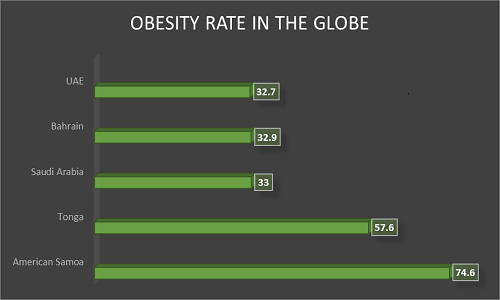
RECENT RESEARCH ON OBESITY:
During the previous 20 years, obesity among grown-ups has ascended totally in the United States. The most recent information from the National Center for Health Statistics expresses that 33% of the population 20 years old and more settled—in excess of 100 million individuals—are strong. This advancement isn't kept to grown-ups however rather, has in like way influenced young people. Among youth, 18 per cent of youngsters created 6-11 years and 21 per cent of teenagers created 12– 19 years are viewed as obese. These rates of obesity have critical repercussions for Americans' success. In any case, one of the national prosperity objectives for the year 2020 is to reduce the consistency of obesity among grown-ups by 10 %, current information demonstrates that the circumstance isn't progressing.
TARGET AUDIENCE:
· Obesity specialists
· Nutrition and Dietetics Associates
· Nutritionists
· Dieticians
· Physical Therapists
· Obesity & Endocrinology Associations and Societies
· Yoga & Fitness Professionals
· Health promoters
· Fitness professionals
· Medical colleges
· Students
· Public Health Professionals
· Industry Professionals
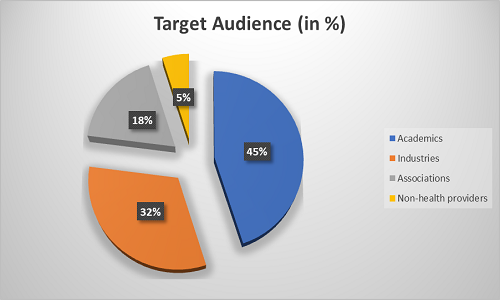
MAJOR ASSOCIATIONS AROUND THE GLOBE:
· All India Association for Advancing Research in Obesity (AIAARO)
· National Lipid Association
· Malaysian Association for the Study of Obesity (MASO)
· This Stigma of Obesity - Association for Psychological Science
· Association for Physical Activity, Diet, and Obesity Measures
· Associations of Obesity, Alcohol abuse and Smoking
· Dieticians Association of Australia
· Association of Parental and Child Overweight and Obesity
· Associations of Urban Environment and Obesity
· Obesity Medicine Association
· World Obesity Federation
· American Obesity Association (AOA)
· Childhood Obesity - American Heart Association
· All India Association for Advancing Research in Obesity
· The Nutrition Society of Australia
· Austrian Nutrition Society
· Belgian Nutrition Society
· British Nutrition Society
MAJOR ASSOCIATIONS IN UAE:
· Emirates Diabetes society
· Middle East hospital
· Pulitzer center
MAJOR ASSOCIATIONS IN DUBAI:
· Gulf Heart Association
· The Dubai Association Centre
· (DAC)The Gulf Chapter of The American Association of Clinical Endocrinologists (AACE)
TOP UNIVERSITIES IN DUBAI:
· Stanford University
· University of California, Los Angeles (UCLA)
· American University in Dubai
· Dubai Medical College for Girls
· University of Sharjah
· Ras al-Kamiah Medical and Health Sciences University

TOP UNIVERSITIES IN UAE:
· American University in Dubai
· Dubai Medical College for Girls
· University of Sharjah
· Ras al-Kamiah Medical and Health Sciences University
· United Arab Emirates University
· RAK MHSU
· Karolinska Institute
TOP UNIVERSITIES IN THE WORLD
· Stanford University
· Johns Hopkins University
· University of California, Los Angeles (UCLA)
· University of California, San Francisco (UCSF)
· UCL (University College London)
· Yale University
· University of Oxford
· Gulf Medical University
· United Arab Emirates University
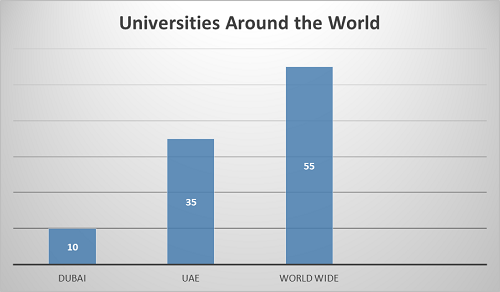

MAJOR HOSPITALS IN DUBAI:
· Medcare Hospital
· Al Zahraa Hospital Dubai
· Aster Hospital Mankhool
· Prime Hospital
· Aster Hospital Mankhool
· Zulekha Hospital Dubai
· Saudi German Hospital Dubai
· Dubai Equine Hospital
· Magrabi Eye Hospital – Dubai
· Belhoul Speciality Hospital
· Thumbay Hospital Dubai
MAJOR HOSPITALS IN UAE:
· Gulf Chinese medical centre
· Amina hospitals
· Belhoul European hospital LLC
· Ajman hospital
· Al baraha hospital
· Mediclinic city hospital
· American hospital dubai
· Dubai sky clinic
· NMC speciality hospital
· Dubai London clinic
· Iranian hospital
· Rashid Hospital
· Al Jalila Children's
MAJOR HOSPITALS AROUND THE WORLD:
· UR High Land Medicine Hospital
· MAYO Clinic
· Health & Social Care Information Centre
· Johnson Country Hospital
· Texas Heart Institute
· SHARP Health Plan
· UR High Land Medicine Hospital
· Health & Social Care Information Centre
· Cleveland Clinic
· Johnson Country Hospital
· Stanford Health Care
· H&HN Hospitals & Health Networks
· UCSF Medical Centre
· Health & Social Care Information Centre
· Cleveland Clinic
· Mississippi State Department of Health
· NH Narayana Health
· Mississippi State Department of Health
· Holy Cross Hospital
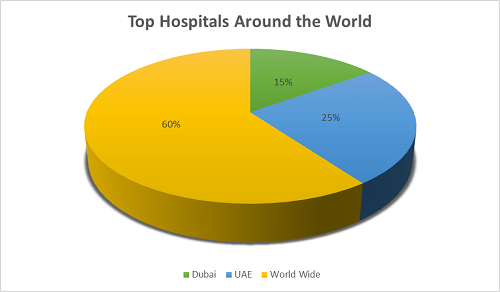
RELATED CONFERENCES:
2. International Conference on Vitamins and Natural Supplements Jan 30-31, 2019 Bangkok, Thailand.
3. Asia Nutritional Conference 2019 February 28-March 01, 2019 Osaka, Japan
4. 24th International Conference on Clinical Nutrition March 04-06, 2019 Barcelona, Spain
5. 8th Annual Congress on Probiotics, Functional Foods & Nutraceuticals March 25-26, 2019 Hong Kong
6. 2nd International Conference on Nutrition, Food Science and Technology April 08-09, 2019 Abu Dhabi, UAE
7. 20th International Congress on Nutrition & Health March 28-30, 2019 Stockholm, Sweden
8. 16th International Conference on Clinical Nutrition April 24-25, 2019 Tokyo, Japan
9. 23rd World Nutrition & Pediatrics Healthcare Conference April 29-30, 2019 Helsinki, Finland.
10. 18th World Congress on Obesity and Nutrition May 15-16, 2019 Perth, Australia
11. 30th World Congress on Nutrition & Food Sciences May 17-18, 2019 Osaka, Japan
RELATED SOCIETIES:
USA: National Association of Nutrition Professionals, USA; American Association of Nutritional Consultants, USA; the International and American Associations of Clinical Nutritionists (IAACN), USA; National Association of Nutrition and Aging Services Programs, USA; The International Society of Sports Nutrition, USA; American Society for nutrition, USA; American Nutrition Association, USA; American Society for Parenteral and Enteral Nutrition, USA; The International Society of Sports Nutrition, USA; American Society for nutrition, USA; American Nutrition Association, USA; American Society for Parenteral and Enteral Nutrition, USA; American Society for nutrition, USA; American Nutrition Association, USA; American Society for Parenteral and Enteral Nutrition, USA; The International Society of Sports Nutrition, USA.
Europe: WHO/Europe Obesity, Europe; Association of European Cancer, Europe; The Natural Products Association, Europe; European Association for the Study of Obesity, Europe; European Obesity, Europe; European Childhood Obesity Group (ECOG), Europe; The European Society for Clinical Nutrition and Metabolism, Europe; British Association for Applied Nutrition & Nutritional therapy, UK; British Dietetic Association, UK; The European Nutrition for Health Alliance, UK; The German Society for Nutrition Medicine, Germany; French Society for Clinical Nutrition, France; Italian Society of Parenteral and Enteral Nutrition, Italy; Austrian Nutrition Society, Austria; British Association for Applied Nutrition & Nutritional therapy, UK; British Dietetic Association, UK; The European Nutrition for Health Alliance, UK.
Asia Pacific: The Nutrition Society of Australia, Asia; Dieticians Association of Australia, Asia; Academy for Eating Disorders; The Korean Nutrition Society, Asia; PENSMA - The Parenteral and Enteral Nutrition Society of Malaysia, Asia; British Dietetic Association, Asia; Nutrition Society of Malaysia, Asia; Asia Pacific Clinical Nutrition Society, China; The Indian Society of Clinical Nutrition, India; Singapore Nutrition and Dietetics Association, Singapore; The Nutritionist-Dietitians Association of the Philippines, Philippines; The Indonesian Nutrition Association, Indonesia; Indian Dietetic Association, India; The Nutrition Society of India, India; The Indonesian Nutrition Association, Indonesia; The Korean Society of Community Nutrition, South Korea.
Middle East: Obesity and metabolic surgery society of India, Middle East; Annual Gulf Obesity surgery society, Middle East; The Nutrition Society, Middle East; All India Association for Advancing Research in Obesity, India; Gulf Heart Association, Dubai; The Dubai Association Centre(DAC), Dubai; The Gulf Chapter of The American Association of Clinical Endocrinologists (AACE), Dubai.
Conference Highlights
- Clinical Nutrition
- Nutrition and Metabolism
- Paediatric and Adult Nutrition
- Nutrition and Health
- Food and Nutrition
- Parental and Maternal Nutrition
- Probiotics
- Nutritional Disorders
- Therapies for Nutrition
- Nutritional Management
- Role of Nutrition in Disease Prevention
- Obesity and Weight Management
- Child and Adult Obesity
- Chronic Diseases Linked with Obesity
- Obesity Counselling
- Animal Nutrition
- Bariatric Surgery
- Diabetes Nutrition
- Nutrition and Health Education
- Sports Nutrition
To share your views and research, please click here to register for the Conference.
To Collaborate Scientific Professionals around the World
| Conference Date | March 21-22, 2019 | ||
| Sponsors & Exhibitors |
|
||
| Speaker Opportunity Closed | Day 1 | Day 2 | |
| Poster Opportunity Closed | Click Here to View | ||
Useful Links
Special Issues
All accepted abstracts will be published in respective Our International Journals.
- Journal of Nutrition & Food Sciences
- Journal of Obesity & Weight Loss Therapy
- Journal of Nutritional Disorders & Therapy
Abstracts will be provided with Digital Object Identifier by




















